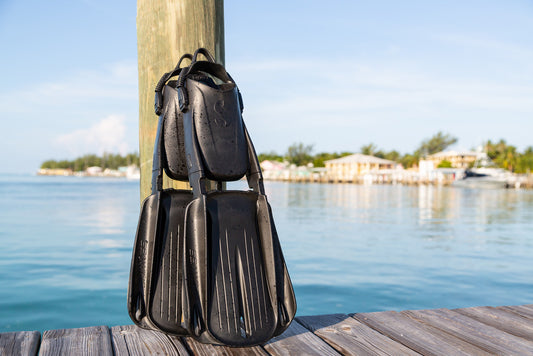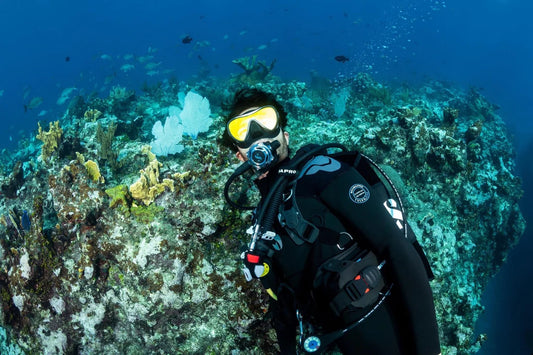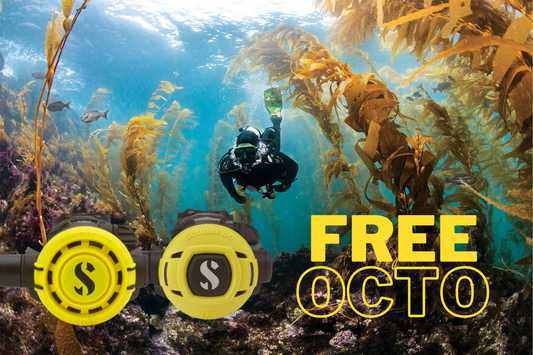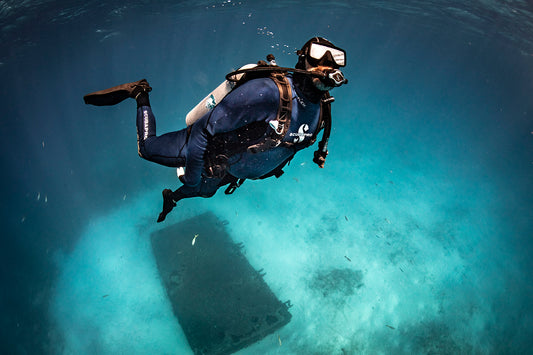
Your brain is your most important organ and demands a plentiful supply of blood yet few of us have much naturally provided thermal insulation in that area. We lose a lot of body heat through our heads so it makes sense to provide this area with its own extra insulation before covering any other part of your body. Convention dictates that we look rather silly if we wear a diving hood and no suit so divers tend to dress in a diving wetsuit as a first step to keeping warm.
That said, a hood is a low-tech solution to an age-old problem so do not omit to take one along with you. If you find you feel cold in your suit alone, adding a hood can make a big difference.
Some hoods have a seal around the neck and face to stop cold water flushing through but you must allow water to reach your ears so that you can equalise the pressure as you go deeper. The face seal has a double function in that it stops exhaled air from entering and lodging in the top of the hood, giving the diver a pointy-headed effect. Some divers simply cut a small hole to allow any such air to escape while others have hoods fitted with a small valve or a hole hidden behind a secondary internal flap.
When you get cold your body automatically reduces the blood supply to your peripheries such as your hand and feet. For this reason, in the very cold conditions of high mountains or the Antarctic, explorers can lose toes or fingers to frostbite. Even in the cold winter conditions found in more temperate climates, we find comfort in a pair of warm gloves.
Handling rough surfaces or anything liable to hurt us, the wise wear suitably gloves, so a pair of diving gloves seems an obviously essential item of clothing for any diver, or does it?
If you are diving in cold conditions, to wear a warm pair of gloves seems sensible. You might even choose to wear a pair of thick woolly gloves under a pair of diver's dry-gloves that keep the water out completely. If you are moving about a wreck that might have rusting or jagged edges of steel, a stout pair of gloves is probably essential. If you are diving in some area where the currents are really fierce and you know you will need to cling on to the rocky substrate to stay in one place, a tough pair of gloves is an ideal solution. Gloves are available in materials from light canvas, through soft neoprene to almost indestructible Kevlar and even stainless-steel chain mail.
So having made a strong argument for the use of gloves would it surprise you to know that in some parts of the world, the use of gloves whilst scuba diving has been banned?
The underwater eco-system is a fragile one. Years ago, divers wore gloves to protect them from the effects of touching stinging corals. Today, divers are banned from wearing gloves in order to protect the corals from diver damage. If you do not know what it is, do not touch it. It may sting you or it may not, but at least you won't hurt it. Dive with your eyes, not your hands.

Happy Diving - John Bantin



